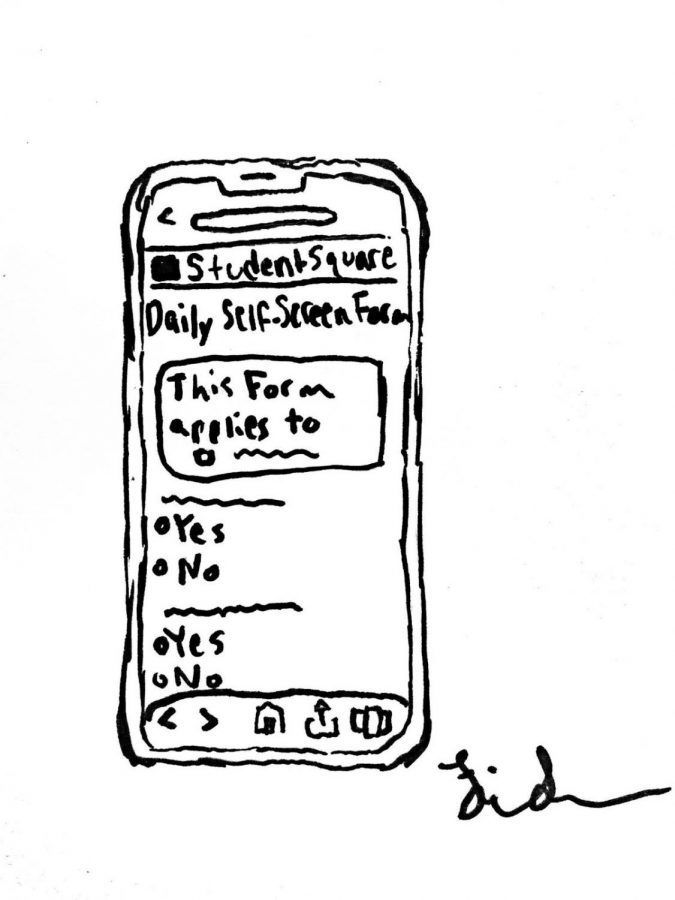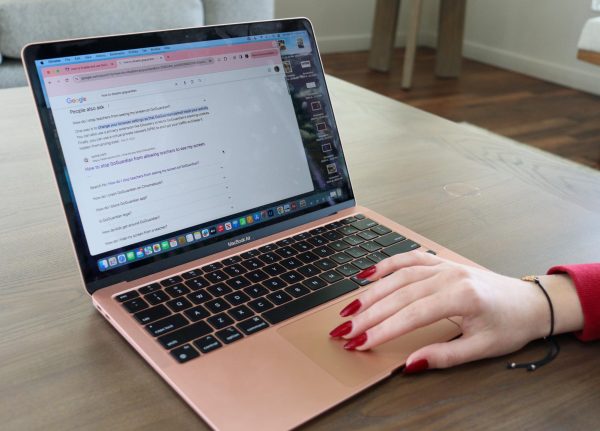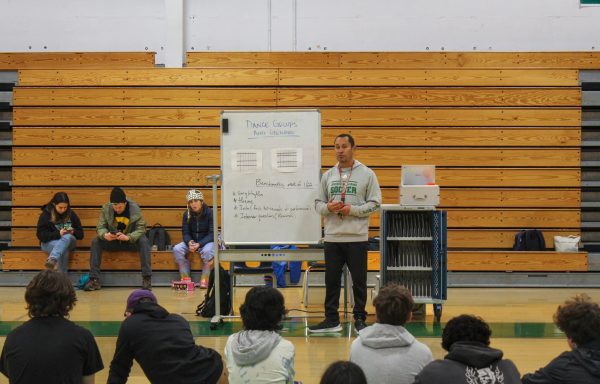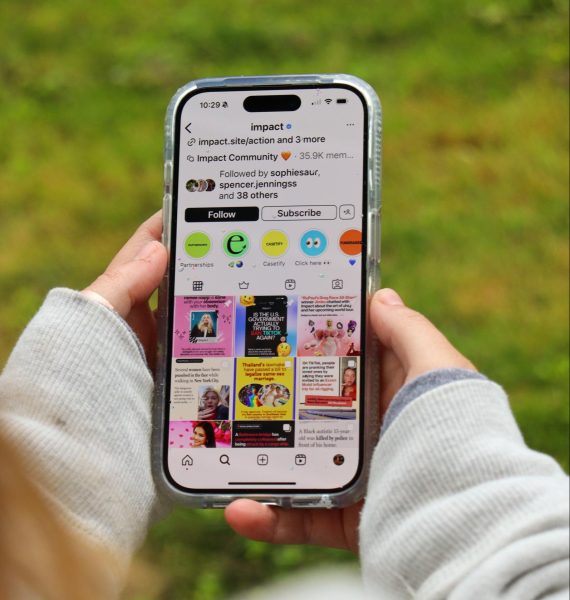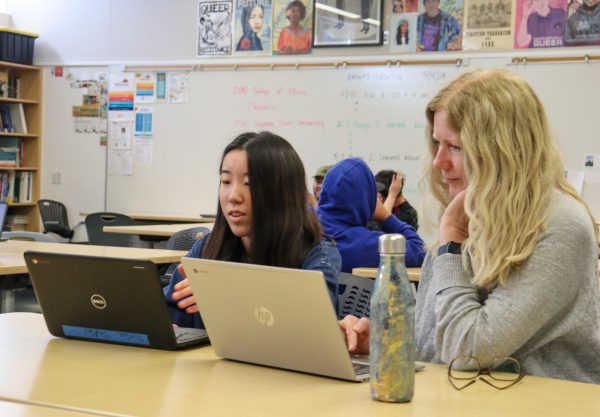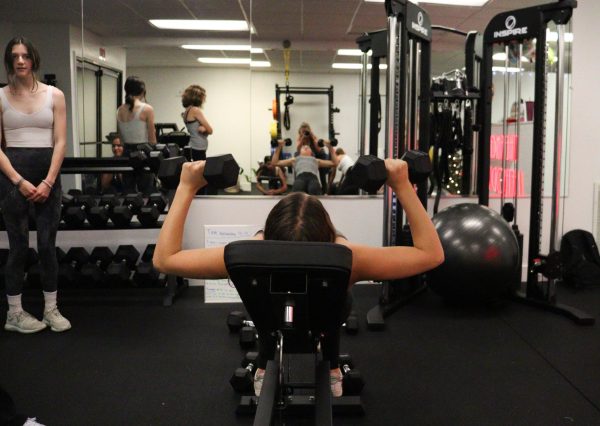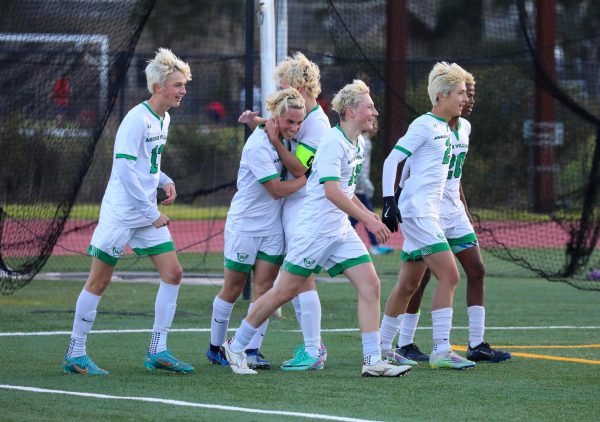HS 1327’s ParentSquare daily health screener presents unexpected issues
A phone shows the daily health screening on the ParentSquare app, a mandatory precaution that students and staff must complete before attending school.
With High School 1327 (HS 1327)’s return to on-campus learning, several prominent safety measures have been enforced, including the COVID-19 symptom-tracing daily health screener on Parentsquare that all students and faculty must complete before arriving on campus. This is an effective way to see if people have experienced COVID-19 symptoms in order to keep them from spreading the virus to others. However, there may be some problems with this new precaution.
The daily health screener contains four major questions, the first reading, “In the last 10 days, have you or anyone in your household tested positive for COVID-19?” The screener goes on to ask if you know anyone with COVID-19 or if you have any similar symptoms to COVID-19.
While this may be an efficient way for faculty and staff to check the health of their students, there may also be some loopholes and shortcomings to the system: one of which is that a student may press “yes” on a question by accident.
“I just woke up, I was super groggy and wasn’t really paying attention and… I guess I hit it wrong,” HS 1327 senior Nick Parr said after accidentally pressing “yes” on one of the questions,“When I submitted it, it said ‘not clear to go to campus.’”
Fortunately, this situation was resolved when Parr contacted Mary Chapman, the Assistant Principals’ Secretary. With her help, he was able to tell his teachers that it was an accident. With the issue cleared Parr could attend school on campus that day.
According to HS 1327 Assistant Principal Nate Severin, accidental incorrect submissions are frequent for students attending campus.
“We’ve had a lot of people hit yes on accident,” Severin said.
Soon after a student hits “yes,” the school’s nurse contacts the family to see if the submission was accidental or not. If the action was unintentional, the teachers are contacted and the student is free to go to school.
However, if the student hits “yes” on purpose there are multiple steps that must be taken before the student can return to in-person school.
The student can stay home for ten days and if in that time they are symptom-free, or have tested negative for COVID-19, they can come back to in-person school. Another option for the student is a doctor’s note saying that if they have symptoms, it is only due to allergies or a situation unrelated to COVID-19.
Another issue with the health screener is that some students intentionally fill out the form as symptom free. A student may have a runny nose but wants to go to school that day, so they fill out the form as if they have no symptoms.
Severin acknowledges this possible issue.
“We recognize that this screener is on the honor code…it is a reminder for staff and students alike that if you don’t feel well, do not come to school,” Severin said.
Severin went on to say that with the option to stay home he hopes students won’t come to campus if they are not feeling well.
In the midst of the COVID-19 pandemic it’s important to remember that it is not just you who is at risk. If you do not feel well, it is advised that you stay home for the sake of your peers, teachers, and your families. Until full time learning begins students will not be marked absent if they attend Zoom classes instead of going to campus. The health screener is to protect you and everyone in your community. It’s important to admit if you have symptoms so that the school can perform contact tracing, ensuring the HS 1327 community is safe.
Your donation will support the student journalists of Archie Williams High School. Your contribution will allow us to purchase equipment and cover our annual website hosting costs. Each donation will receive a magazine subscription for a year (6 copies a year), and become a part of the important work our publication is doing.
$35 -- Subscription to the magazine
$50 -- Silver Sponsorship
$75 -- Gold Sponsorship
$100 -- Platinum Sponsorship

Izzy is a sophomore, in her second year of journalism. She enjoys reading fantasy books, her family and eating anything with sugar. You can find her at...
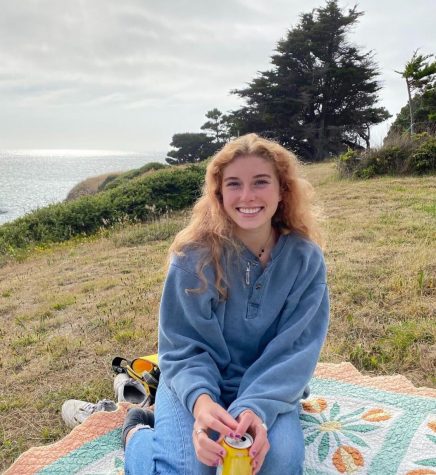
Fiona Swan, is a junior at High School 1327 and this will be her first year in Advanced Journalism. She spends most of her free time surfing, discovering...


